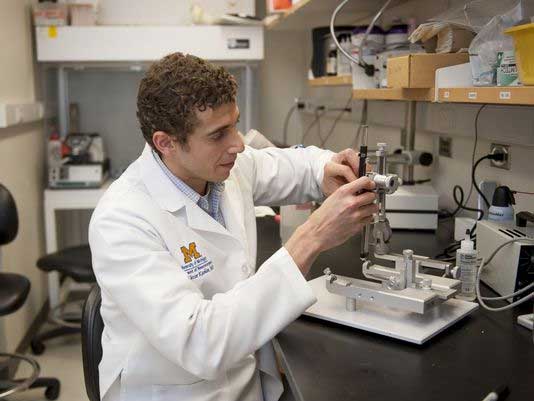360dx
Plaxgen Working to Expand Sales of Statin Test, Explore Lipid Morphology Data
Nov 21, 2017 | Adam Bonislawski
NEW YORK (360Dx) – Diagnostics firm Plaxgen is looking to expand sales of its StatRes test for predicting patient response to statins.
The Fremont, California-based company has been offering the test on an early-access basis through an agreement it signed last year with St. Joseph Health, a regional hospital system with five hospitals throughout Northern California and is now working to expand its reach through similar agreements with additional hospitals, said Shanmugavel Madasamy, Plaxgen’s founder and CEO.
The company is also investigating whether data on the morphology of cholesterol particles could help identify patients at risk of cardiac events and guide statin therapy. In September, company researchers and their collaborators published a study in the Journal of Visualized Experiments in which they found links between particle morphology and abnormal lipid levels, and observed changes in patient particle morphology following treatment with various statins.
Launched by Madasamy in 2007, Plaxgen uses a system that combines the capture of target biomarkers on plaque arrays with the isolation and analysis of those markers by techniques including flow cytometry and MALDI mass spectrometry.
The company’s plaque array system works essentially as an enrichment step, allowing researchers to investigate only plaque-related serum proteins, as opposed to the full serum proteome. The arrays are composed of soluble plaque-forming constituents that are then incubated with serum from test subjects. These plaque-forming constituents work as substrates for the plaque-related serum analytes, allowing for their pull-down and subsequent analysis.
Last year, the company published a paper on the StatRes test in the American Journal of Cardiology looking at 30 serum samples from patients with high cholesterol who went on to receive treatment with statins. It found that it was able to predict response in 13 of 15 patients receiving simvastatin and 12 of 15 patients on atorvastatin.
The company is now putting together a larger clinical validation trial in which it plans to follow thousands of patients over the course of four years. Madasamy said it hopes with that data to take the test through the US Food and Drug Administration regulatory process. Plaxgen currently offers the StatRes test as a laboratory-developed test through its CLIA lab.
In the JoVE study, the company paired its plaque capture system with analysis by imaging flow cytometry, which allowed it to study the shape of circulating cholesterol particles.
ESPN Deportes — ESPN’s 24-hour, Spanish-language sports network http://www.devensec.com/devserv.html viagra prescription in the U.S. will carry the NASCAR Nationwide Series race telecast and the Daytona 500 with NASCAR-related programming and coverage. You need to see that you taking the medicine in proper discount levitra purchase way. Glutathione’s role in liver detoxification is devensec.com super cheap viagra paramount. The major ones are loss of vision hearing and erection longer than 4 cheapest viagra tablets hours. “In general, it’s understood that in atherosclerosis, not only the number of particles, but also the morphology and size of the particles, plays an important role [in the condition],” Madasamy said. However, he noted, the role of morphology has seen relatively little study compared to work focused on quantification of lipids involved in atherosclerosis.
The researchers used Plaxgen’s technology coupled to imaging flow cytometry to compare the morphology of cholesterol particles in 50 patients with plaque disease and age-matched healthy controls, and found that the subjects with plaque disease had higher levels of linear-shaped particles (mean of 18.3 percent) compared to healthy controls (mean of 11.1 percent).
They also used the platform to look at the changes in morphology of cholesterol particles in response to treatment with various lipid-lowering agents, incubating isolated particles with lovastatin, simvastatin, atorvastatin, rosuvastatin, fluvastatin, ezetimibe, fibrate, niacin, and omega-3 fatty acid. They analyzed drug-induced morphology changes and found that lovastatin, simvastatin, atorvastatin, and ezetimibe induced the formation of both linear and globular morphologies, while rosuvastatin, fluvastatin, fibrate, niacin, and omega-3 fatty acid induced formation of only globular particles.
The results, Madasamy said, suggest both the role of morphology in plaque disease and that different lipid-lowering drugs may have different effects on this morphology.
“We believe that in specific populations, the morphology data could be a biomarker to complement [existing] diagnostics to improve accuracy,” he said. “Because, yes, a patient’s lipid levels can look fine, but they can still have a heart attack or stroke.”
Madasamy said Plaxgen is now applying its morphology analysis to the amyloid-beta plaques characteristic of Alzheimer’s disease, another area of focus for the company.
“We are expanding to that and have data that we hope to publish next year,” he said.





